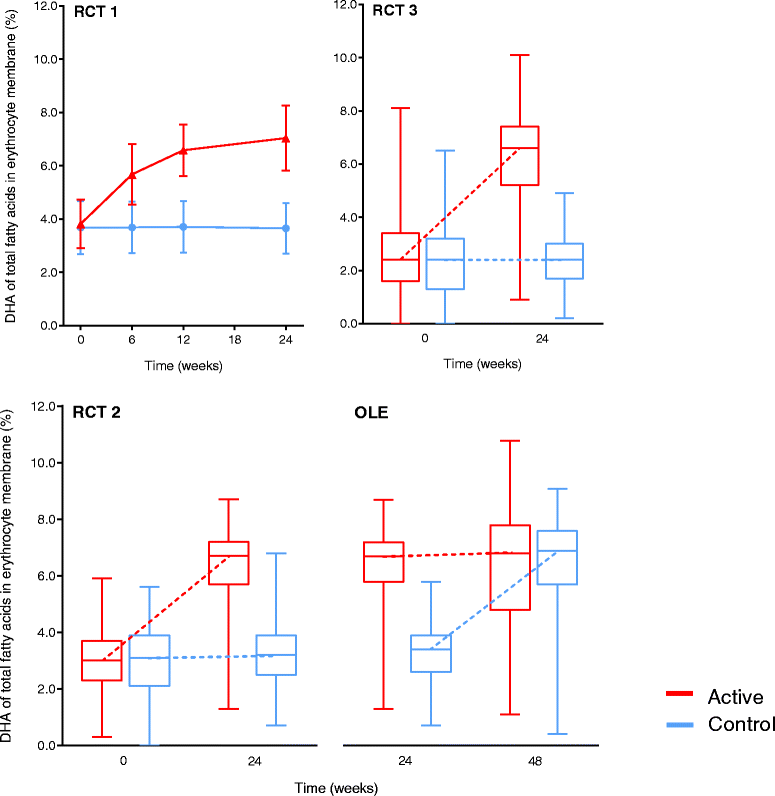Effects of Souvenaid on plasma micronutrient levels and fatty acid profiles in mild and mild-to-moderate Alzheimer's disease
- PMID: 26213579
- PMCID: PMC4513634
- DOI: 10.1186/s13195-015-0134-1
Effects of Souvenaid on plasma micronutrient levels and fatty acid profiles in mild and mild-to-moderate Alzheimer's disease
Abstract
Introduction: Circulating levels of uridine, selenium, vitamins B12, E and C, folate, docosahexaenoic acid (DHA) and eicosapentaenoic acid (EPA) have been shown to be lower in patients with Alzheimer's disease (AD) than in healthy individuals. These low levels may affect disease pathways involved in synapse formation and neural functioning. Here, we investigated whether, and to what extent, circulating levels of micronutrients and fatty acids can be affected by oral supplementation with Souvenaid (containing a specific nutrient combination), using data derived from three randomized clinical trials (RCT) and an open-label extension (OLE) study with follow-up data from 12 to 48 weeks.
Methods: Subjects with mild (RCT1, RCT2) or mild-to-moderate AD (RCT3) received active or control product once daily for 12-24 weeks or active product during the 24-week OLE following RCT2 (n = 212-527). Measurements included plasma levels of B vitamins, choline, vitamin E, selenium, uridine and homocysteine and proportions of DHA, EPA and total n-3 long-chain polyunsaturated fatty acids in plasma and erythrocytes. Between-group comparisons were made using t tests or non-parametric alternatives.
Results: We found that 12-24-week active product intake increased plasma and/or erythrocyte micronutrients: uridine; choline; selenium; folate; vitamins B6, B12 and E; and fatty acid levels of DHA and EPA (all p < 0.001). In the OLE study, similar levels were reached in former control product/initial active product users, whereas 24-week continued active product intake showed no suggestion of a further increase in nutrient levels.
Conclusions: These data show that circulating levels of nutrients known to be decreased in the AD population can be increased in patients with mild and mild-tomoderate AD by 24-48-week oral supplementation with Souvenaid. In addition, to our knowledge, this is the first report of the effects of sustained dietary intake of uridine monophosphate on plasma uridine levels in humans. Uptake of nutrients is observed within 6 weeks, and a plateau phase is reached for most nutrients during prolonged intake, thus increasing the availability of precursors and cofactors in the circulation that may be used for the formation and function of neuronal membranes and synapses in the brain.
Figures

References
-
- Hartmann T, van Wijk N, Wurtman RJ, Olde Rikkert MGM, Sijben JWC, Soininen H, et al. A nutritional approach to ameliorate altered phospholipid metabolism in Alzheimer’s disease. J Alzheimers Dis. 2014;41:715–7. - PubMed
Publication types
MeSH terms
Substances
LinkOut - more resources
Full Text Sources
Other Literature Sources
Medical
Research Materials

